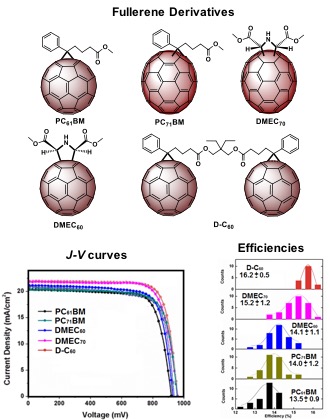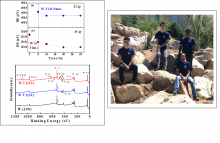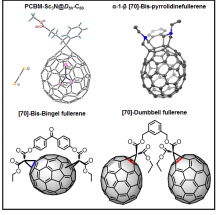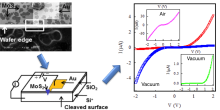Perovskite solar cells (PSCs), have shown a remarkable increase in photoconversion efficiency (PCE), from 3.8% in 2009, to 22.1% in 2016. The good electron transporting and solution processable properties of most fullerene derivatives make them the most popular electron transporting materials (ETMs) in PSCs. To the best of our knowledge, the influence of different adducts on the PCEs of fullerene-based PSCs has not been fully explored to date. Here, we report new functionalized fullerene derivatives, and their performance as the ETMs in PSCs. 










 NSF-JSU-UCSB PREM members conducted outreach activities at local school and initiate a Science Line program to the minority participants.
NSF-JSU-UCSB PREM members conducted outreach activities at local school and initiate a Science Line program to the minority participants. According to the World Health Organization (WHO), more than 1.5 million children die each year due to rotavirus contamination in drinking water.
According to the World Health Organization (WHO), more than 1.5 million children die each year due to rotavirus contamination in drinking water. Since the ability to detect very low levels of prostate specific membrane antigen (PSMA) may enable doctors to diagnose men with prostate cancer recurrence, it has the capability to reduce prostate cancer-related mortality and morbidity.
Since the ability to detect very low levels of prostate specific membrane antigen (PSMA) may enable doctors to diagnose men with prostate cancer recurrence, it has the capability to reduce prostate cancer-related mortality and morbidity. The evolvement of multiple drug resistance MRSA bacteria has increased day by day and are spread all over the world. Early diagnosis is the key for survival from MRSA infection.
The evolvement of multiple drug resistance MRSA bacteria has increased day by day and are spread all over the world. Early diagnosis is the key for survival from MRSA infection.